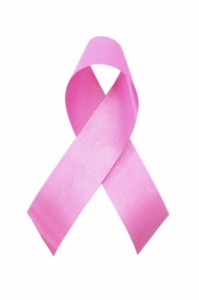One in Eight: Early detection best way to prevent breast cancer
 October is breast cancer awareness month. Throughout this month, Chouchani, Sayegh and Bagnarello MD will be posting articles about breast cancer prevention and what to do post diagnosis. This week we are focused on early detection.
October is breast cancer awareness month. Throughout this month, Chouchani, Sayegh and Bagnarello MD will be posting articles about breast cancer prevention and what to do post diagnosis. This week we are focused on early detection.
Breast cancer is a disease that occurs when malignant (bad) cancer cells form in the tissue of the breast. One in eight women will be diagnosed with breast cancer during their lifetime and breast cancer is the most commonly diagnosed cancer in women. While breast cancer is the second leading cause of death in women, it can also occur in men with an estimated 2,150 men diagnosed per year.
However, according to the National Cancer Institute, when detected early in the “localized stage,” the five-year survival rate for breast cancer is 98%.
Early detection is easiest when you know the signs and symptoms of breast cancer while also performing regular self-exams.
Signs and symptoms to watch for:
- Nipple tenderness
- Thickening lump in the breast or underarm area
- Change in the skin around the breast or nipple, or enlargement of the skin’s pores
- Lump in the breast or a change in the shape or size of the breast
- Dimples anywhere on the breast
- Unexplained swelling or shrinkage of the breast (especially limited to one side)
- Nipple turned inward or inverted
- Red, swollen or scaly skin around the breast, nipple or areola
- Any clear or bloody nipple discharge
Most people experiencing signs and symptoms will only experience two or three and that does not mean they automatically have breast cancer. If you are experiencing any of the signs or symptoms, or feel any sort of unexplained lump in the breast or armpit area, contact your physician immediately.
Self-exams are extremely important especially concerning early detection. For further instruction on performing self-exams, see a previous article here, or you can find more information on the website for the National Breast Cancer Foundation here. Self-exams should be performed at home about once a month.
A clinical exam can be performed by a healthcare professional in-office during an appointment or during an annual exam or physical. Healthcare professionals will check the breast and armpit for lumps while also checking the skin for abnormal coloration, texture or discharge.
Mammograms are conducted by taking an x-ray of the breast tissue to examine the tissue for suspicious clusters, flecks, growths etc. Women over 40 should have a mammogram every one to two years, while women under 40 with risk factors should ask their healthcare professional what’s best.
The National Breast Cancer Foundation also offers an Early Detection Plan which is available for iPhone and Android on the App Store and on Google Play. The EDP reminds users to do monthly self-exams with notifications on their phones, tablets or computers and also aids in scheduling clinical breast exams and mammograms. For more information, visit their website here.
Reducing the risk of breast cancer can be as simple as maintaining a healthy weight, staying physically active, maintaining a healthy diet, and limiting alcohol and tobacco consumption. Early detection leads to the greatest possibility for efficient and successful treatment.
For more information on breast cancer, visit our patient education section here. And if you’d like to make an appointment with any of our doctors, please give us a call today. We are accepting new patients in all three of our offices in Western New York!
More